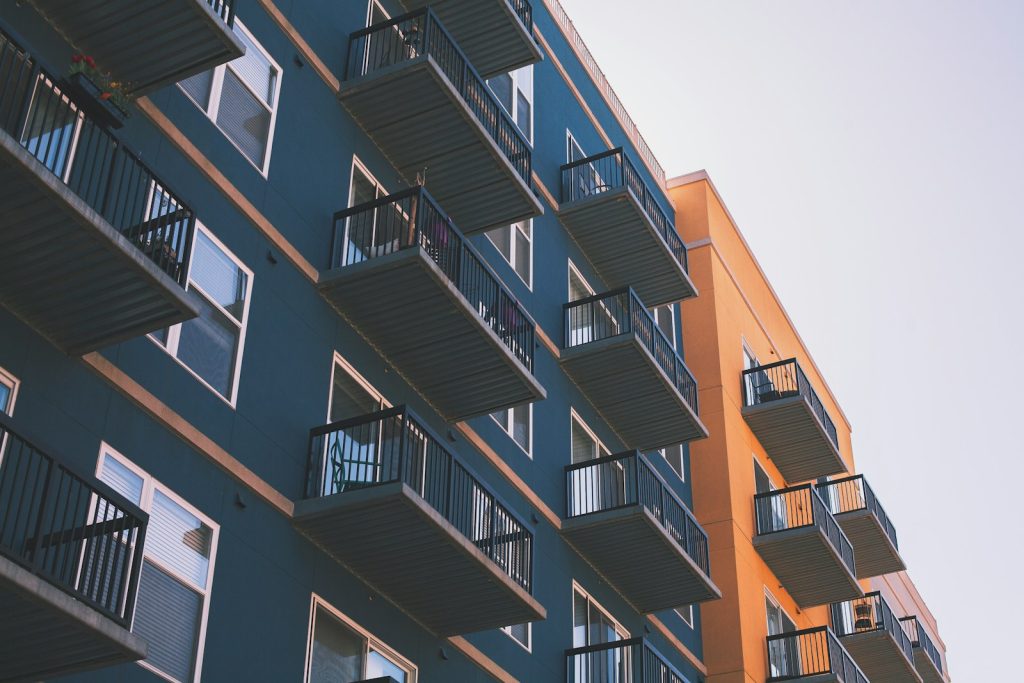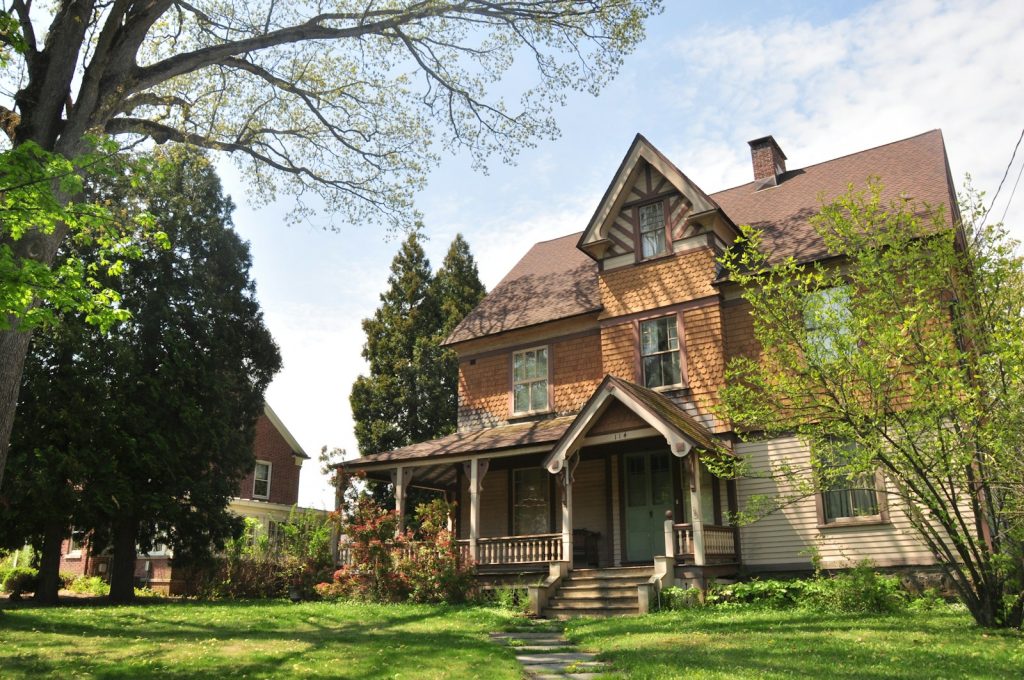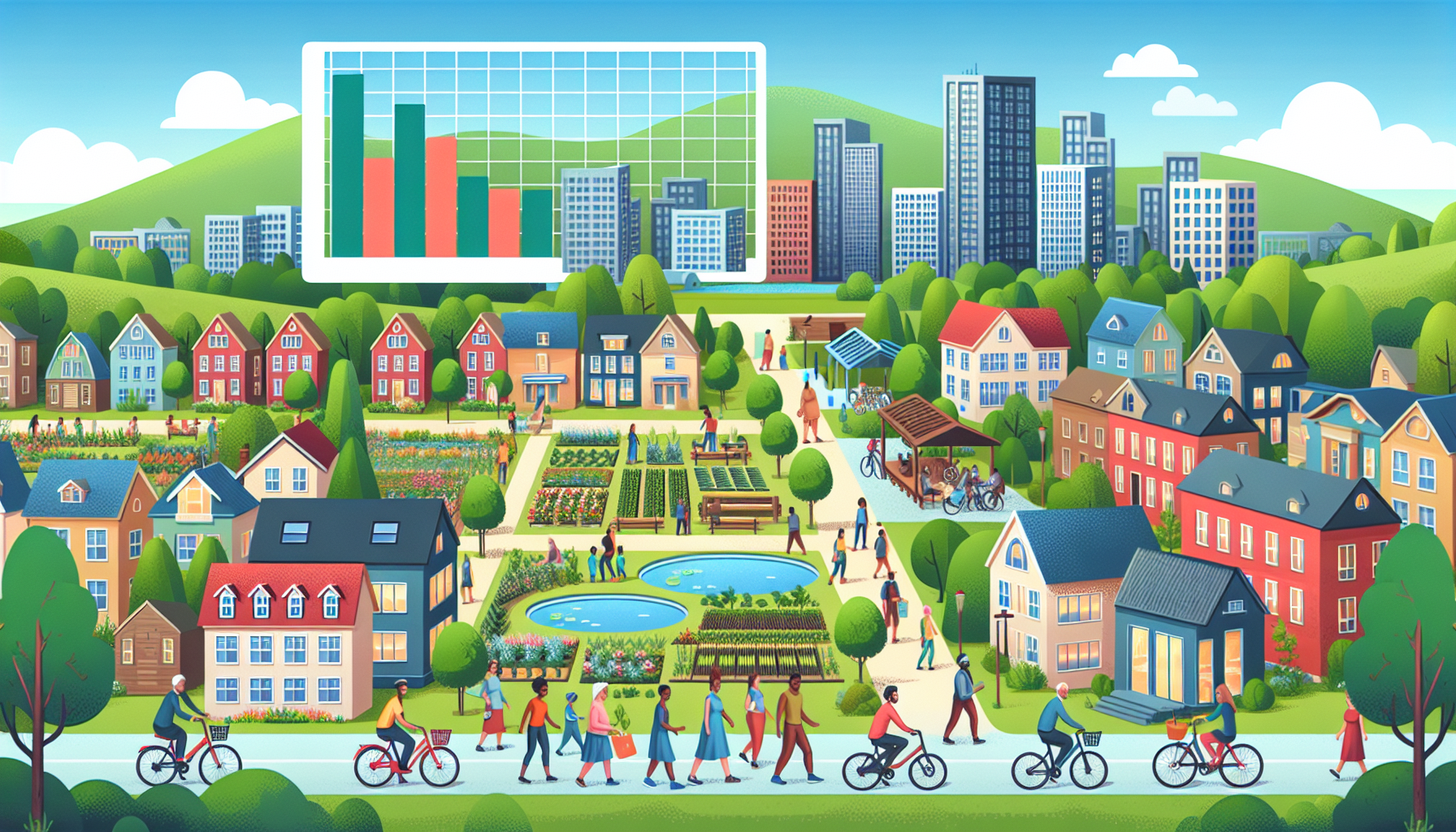Getting a Grip on Housing Affordability
Housing affordability is a big deal for city folks and anyone thinking about moving to a new place. Knowing what makes housing affordable and what affects it can help you make smart choices.
What’s Affordable Housing, Anyway?
Affordable housing means you’re not spending more than 30% of your gross income on housing, including utilities. So, if you make $40,000 a year, you should aim to spend about $1,000 a month or less on housing (Quora). This way, you’ve got enough left for other stuff like food, healthcare, and getting around.
What Affects Housing Affordability?
Several things can make housing more or less affordable. Knowing these can help you figure out why some places are cheaper to live in than others.
Land Costs
One of the biggest factors is the cost of land. Even though building techniques and materials have gotten cheaper, land prices, especially in cities, keep going up (Quora).
Income vs. Housing Costs
A handy way to check if housing is affordable is to look at the ratio of your take-home pay to the median rent or mortgage in the area (Quora). If the ratio is below 0.2, housing is pricey. If it’s over 0.5, housing is cheap.
| Metric | Ratio | What It Means |
|---|---|---|
| Median Home Price to Median Income | < 0.2 | Pricey Housing |
| Median Home Price to Median Income | > 0.5 | Cheap Housing |
Economic Stuff
In many cities, the problem isn’t just that housing is expensive. Low-wage jobs also make it hard to afford a place. Higher wages could help make housing more affordable (Quora). So, cities with higher median incomes might have more affordable housing, even if the prices are higher.
For more on comparing living costs between city and country life, check out our article on rural vs urban cost. If you’re weighing the pros and cons of city living, see our piece on city living disadvantages.
Knowing these factors can help you figure out which city might be the most affordable city for you.
Why Affordable Housing Matters
Impact on Communities
Affordable housing is like the secret sauce for happy, healthy neighborhoods. When folks aren't drowning in rent or mortgage payments, they stress less and feel better mentally. Plus, they can spend their hard-earned cash on other important stuff like healthcare, education, and good food. This makes the whole community more stable and happy.
Affordable housing also means everyone gets a seat at the table. When people from different backgrounds can afford to live in the same area, the community becomes a colorful mix of cultures and ideas. This diversity can boost local businesses because more people are spending money close to home.
| Impact Area | Benefits |
|---|---|
| Health | Better mental and physical health |
| Education | Easier access to schools and learning |
| Economy | More local spending |
| Diversity | Inclusive and lively communities |
Affordable housing can also tackle homelessness. When people have a safe place to call home, they're less likely to end up on the streets. This reduces the strain on social services and healthcare systems.
Economic Considerations
Affordable housing isn't just good for people; it's good for the economy too. When housing costs are reasonable (usually no more than 30% of your income), folks have more money to spend on other things. This boosts local businesses and creates jobs.
The price of land is a big deal when it comes to housing costs. Even though building techniques have gotten cheaper, land prices, especially in cities, are still sky-high. Policies that address land costs can make housing more affordable.
In big cities, lots of low-paying jobs make it hard for people to afford housing. Higher wages could help fix this problem.
| Metric | What It Means |
|---|---|
| Median Home Price to Median Income Ratio | Lower ratio = more affordable housing |
| Income to Housing Cost Ratio | Affordable if it's 0.3 or less |
For more on how to measure housing affordability, check out our article on housing affordability metrics.
Affordable housing also attracts businesses. Companies like to set up shop where their employees can afford to live. This brings more jobs and economic growth to the area.
Affordable housing isn't just about having a roof over your head; it's about building strong, thriving communities and economies. For more on why living in a big city can be awesome, visit our article on big city benefits.

Government Housing Help
Government housing help is a big deal for making sure low-income folks have a safe place to live without breaking the bank. Two major programs that really make a difference are the Low Income Home Energy Assistance Program (LIHEAP) and the Emergency Rental Assistance (ERA) programs.
LIHEAP: Keeping the Lights On
The Low Income Home Energy Assistance Program (LIHEAP) is all about helping families with their energy bills. This federal program helps cover costs for heating, cooling, weatherizing homes, and even fixing up heating and cooling systems. It's a lifesaver for many families (LIHEAP).
Here's what LIHEAP can help with:
- Paying heating and cooling bills
- Stopping energy shutoffs
- Getting energy services back on
- Making homes more energy-efficient
- Fixing or replacing heating and cooling equipment
| LIHEAP Services | What It Does |
|---|---|
| Heating Bills Help | Covers winter energy costs |
| Cooling Bills Help | Covers summer energy costs |
| Energy Crisis Help | Stops energy shutoffs |
| Weatherization | Makes homes more energy-efficient |
| Equipment Repair/Replacement | Fixes or replaces heating/cooling systems |
Heads up: LIHEAP doesn't give out direct grants to individuals and won't charge you a fee. If someone asks for money or offers a grant, it's a scam. Report it to the U.S. Department of Health and Human Services (HHS) Fraud Hotline at 1-800-447-8477 (LIHEAP).
Emergency Rental Assistance: Keeping Roofs Over Heads
The Treasury’s Emergency Rental Assistance (ERA) programs have pumped over $46 billion into keeping renters in their homes during the COVID-19 pandemic. These programs have helped make over 10 million payments to renters facing eviction, especially helping low-income renters and renters of color (U.S. Department of the Treasury).
There are two ERA programs:
- ERA1 Program: This one came from the Consolidated Appropriations Act, 2021, and provided $25 billion for financial help and housing stability services.
- ERA2 Program: This one came from the American Rescue Plan Act of 2021, and provides $21.55 billion for financial help, housing stability services, and eviction prevention.
| ERA Program | Money Given | What It Does |
|---|---|---|
| ERA1 | $25 billion | Financial help, housing stability services |
| ERA2 | $21.55 billion | Financial help, housing stability services, eviction prevention |
These programs have been crucial in keeping people in their homes during tough times. For more info on living costs and comparisons, check out articles on living expenses and rural vs urban cost.
Affordable Cities in the USA
Looking for a place in the US where your dollar stretches further? Check out these five cities that offer a sweet spot of low living costs and decent incomes.
Cedar Park, Texas
Cedar Park is a gem when it comes to affordability. Living here costs 7.7% less than the national average, and the median household income is 22.2% higher than the national median (The Ascent). Families love it for its top-notch public schools.
| Metric | Value |
|---|---|
| Cost of Living | 7.7% below national average |
| Median Income | 22.2% above national median |
Hastings, Nebraska
Hastings is another wallet-friendly city. The cost of living is 8.4% below the national average, and housing is 14.3% cheaper. Plus, it boasts a median salary 16.2% higher than the national median and the lowest unemployment rate on our list at 2.1%.
| Metric | Value |
|---|---|
| Cost of Living | 8.4% below national average |
| Housing Costs | 14.3% below national average |
| Median Salary | 16.2% above national median |
| Unemployment Rate | 2.1% |
St. Paul, Minnesota
St. Paul stands out for its high wages, with a median household income 23.5% above the national median. The cost of living is 2.4% below the national average, and housing costs are 9.9% lower (The Ascent).
| Metric | Value |
|---|---|
| Cost of Living | 2.4% below national average |
| Housing Costs | 9.9% below national average |
| Median Income | 23.5% above national median |
San Marcos, Texas
San Marcos, a suburb of Austin, is a hit with young adults, thanks to its median age of 25.1. It offers high salaries, 22.2% above the national median, and grocery costs that are 14.2% cheaper. Overall, living here is 3.4% cheaper than the national average.
| Metric | Value |
|---|---|
| Cost of Living | 3.4% below national average |
| Median Income | 22.2% above national median |
| Grocery Costs | 14.2% below national average |
| Median Age | 25.1 |
Midland, Texas
Midland offers a cost of living 9.4% below the national average, and housing is 22.9% cheaper. The city has a median age of 31.4 and a median household income 13.7% above the national median (The Ascent).
| Metric | Value |
|---|---|
| Cost of Living | 9.4% below national average |
| Housing Costs | 22.9% below national average |
| Median Income | 13.7% above national median |
| Median Age | 31.4 |
These cities strike a balance between affordable living and higher incomes, making them great options for anyone looking to move. Curious about how city life stacks up against rural living? Check out our article on rural vs urban cost.

Tackling Housing Costs in Cities
Finding affordable housing is a big deal for folks living in cities or thinking about moving to one. Let's dig into what Tampa's doing to make housing more affordable and some broader ideas that can help.
Tampa’s Efforts to Make Housing Affordable
Tampa's got a few tricks up its sleeve to help folks find affordable places to live. The city's Advisory Team has two main programs in mind: a Community Land Trust (CLT) and a Housing Trust Fund (HTF) (City of Tampa).
- Community Land Trust (CLT): This program buys land and keeps it for affordable housing. By owning the land, the CLT makes sure homes stay affordable for a long time.
- Housing Trust Fund (HTF): This fund gathers money to plan, design, and build new homes. Tampa wants to start with $8 million and grow it to $40 million in eight years (City of Tampa).
Tampa folks also chip into Florida's Sadowski Trust Fund, which is supposed to help with housing costs. But, a lot of that money ends up in the state's general budget. So, Tampa's looking for other ways to keep their housing plans funded.
The Advisory Team also wants to add 10,000 homes for all income levels by 2027. This should give people more choices and help meet the need for affordable housing (City of Tampa).
What Are Community Land Trusts and Housing Trust Funds?
Community Land Trusts (CLTs) and Housing Trust Funds (HTFs) are key players in making housing affordable in cities.
-
Community Land Trusts (CLTs): CLTs buy and hold land to help the community. They keep housing costs stable by owning the land and separating it from the buildings. This way, homes stay affordable, and people aren't pushed out.
-
Housing Trust Funds (HTFs): HTFs gather money specifically for affordable housing. They can use this money for things like subsidies for low-income families, grants for non-profit developers, and loans for affordable housing projects.
How Cities Can Make Housing More Affordable
Cities can try a bunch of different things to help people find affordable homes:
- Change Zoning Laws: Make zoning rules more flexible to allow different types of housing, like multi-family units and tiny homes. This can increase the number of homes available.
- Inclusionary Zoning: Make developers include affordable units in new housing projects. This mixes affordable housing into new developments.
- Public-Private Partnerships: Work with private developers and non-profits to pool resources and know-how for affordable housing projects.
- Tax Breaks: Give tax incentives to developers who build affordable homes. This can encourage more investment in affordable housing.
- Rent Control: Set limits on how much rent can go up to protect tenants from crazy rent hikes.
Want to know more about affordable cities, compare city and small-town living costs, or see how rural and urban living stack up? Check out our articles on the most affordable city, small town vs city living, and rural vs urban cost.
Comparing Urban and Rural Living Costs
Cost Differences
Thinking about moving? Let's break down the cost differences between city life and country living. City living usually means higher expenses because of the demand for real estate, less space, and the need for more public services. For instance, living in Atlanta can be pricier than settling in a small town like Warsaw, NC.
| Area Type | Average Monthly Rent | Average Monthly Utilities | Average Monthly Groceries |
|---|---|---|---|
| Urban (e.g., Atlanta) | $1,500 | $150 | $400 |
| Rural (e.g., Warsaw, NC) | $800 | $100 | $300 |
Cities also have higher living costs due to the competition for space and the need for more infrastructure. It's like everyone wants a piece of the pie, and the pie isn't getting any bigger.
For a deeper dive into these differences, check out our article on rural vs urban cost.
Job Opportunities
Even though city life costs more, it comes with more job opportunities and chances for economic growth. Cities attract people looking for better jobs and social mobility. This influx drives up living costs but also opens doors for financial growth.
| Area Type | Job Opportunities | Average Salary | Economic Growth Potential |
|---|---|---|---|
| Urban (e.g., Atlanta) | High | $60,000 | High |
| Rural (e.g., Warsaw, NC) | Low | $40,000 | Low |
On the flip side, rural areas often have fewer job opportunities, which can make it tough to get ahead financially. Sure, the cost of living is lower, but finding a good job can be like finding a needle in a haystack.
For more on the pros and cons of city living, check out our articles on city living worth and city living disadvantages.
By comparing the costs and job opportunities in urban and rural areas, you can decide where to live based on your financial goals and lifestyle. Explore the benefits of living in a big city to see why many people choose urban life despite the higher costs.
How to Compare Housing Affordability
Figuring out if you can afford a place to live boils down to a couple of key numbers. Let's break it down with two main ratios: how much of your income goes to housing and how home prices stack up against incomes.
Income to Housing Cost Ratio
This ratio tells you what chunk of your paycheck goes to keeping a roof over your head. Affordable housing means you shouldn't spend more than 30% of your gross income on rent or mortgage, including utilities. So, if you make $40,000 a year, you shouldn't be shelling out more than $1,000 a month on housing.
| Annual Income ($) | Monthly Affordable Housing Cost ($) |
|---|---|
| 30,000 | 750 |
| 40,000 | 1,000 |
| 50,000 | 1,250 |
| 60,000 | 1,500 |
This ratio is handy for comparing city life to country living. Cities usually have pricier land, which can make housing more expensive. Curious about the cost differences? Check out our article on rural vs urban cost.
Median Home Price to Median Income Ratio
This one shows how home prices measure up to what people are earning in a city. A ratio below 0.2 means housing is pricey, while a ratio over 0.5 means it's pretty cheap.
| City | Median Home Price ($) | Median Income ($) | Ratio |
|---|---|---|---|
| Cedar Park, TX | 300,000 | 100,000 | 0.3 |
| Hastings, NE | 150,000 | 50,000 | 0.3 |
| St. Paul, MN | 250,000 | 80,000 | 0.32 |
| San Marcos, TX | 200,000 | 60,000 | 0.33 |
| Midland, TX | 220,000 | 70,000 | 0.31 |
This ratio gives you a snapshot of how affordable homes are in different places, helping you decide where to move. For more on this, check out our article on living expenses.
Both these ratios are key to understanding and comparing living costs in different cities. They can help you figure out the most affordable city to call home.
Making City Life Better
Making a city a great place to live means focusing on stuff that makes life easier and more enjoyable for everyone. Two big things to look at are how easy it is to walk around and how good the healthcare is.
Making Cities Walkable
Making it easier to walk around can really improve life in a city. Walkable cities are safer, more convenient, and healthier. Even small, cheap changes can make a big difference. Take Mountain View, CA, for example. They’ve added bike lanes, signs to help people find their way, curb cuts, and more trees. These changes have turned car-heavy areas into places where people actually want to walk around.
| City | Walkability Changes | Impact |
|---|---|---|
| Mountain View, CA | Bike lanes, wayfinding signs, curb cuts, trees | More pedestrian-friendly, better quality of life |
You don’t need a lot of money to make these changes. Think about closing main streets for festivals, turning parking spots into cafe seating, or creating walking trails. These ideas not only make life better for residents but also make the community more lively.
Want to know more about city living? Check out our articles on small town vs city living and city living worth.
Getting Good Healthcare
Good healthcare is super important for making a city a great place to live. People in cities usually have better access to doctors and specialists compared to those in rural areas. This includes specialists like heart doctors, brain doctors, and bone doctors, who are often hard to find in the countryside.
| Area | Healthcare Access | Impact |
|---|---|---|
| City | Lots of specialists, shorter wait times | Better health, quicker treatment |
| Countryside | Few specialists, long wait times (3-9 months) | Delayed treatment, worse health |
In rural areas, it can take forever to get an appointment with specialists like rheumatologists, psychiatrists, psychologists, and pediatricians. This can make health problems worse and cause more suffering.
For more on city living and its perks, check out our articles on benefits of living in a big city and rural vs urban cost.





